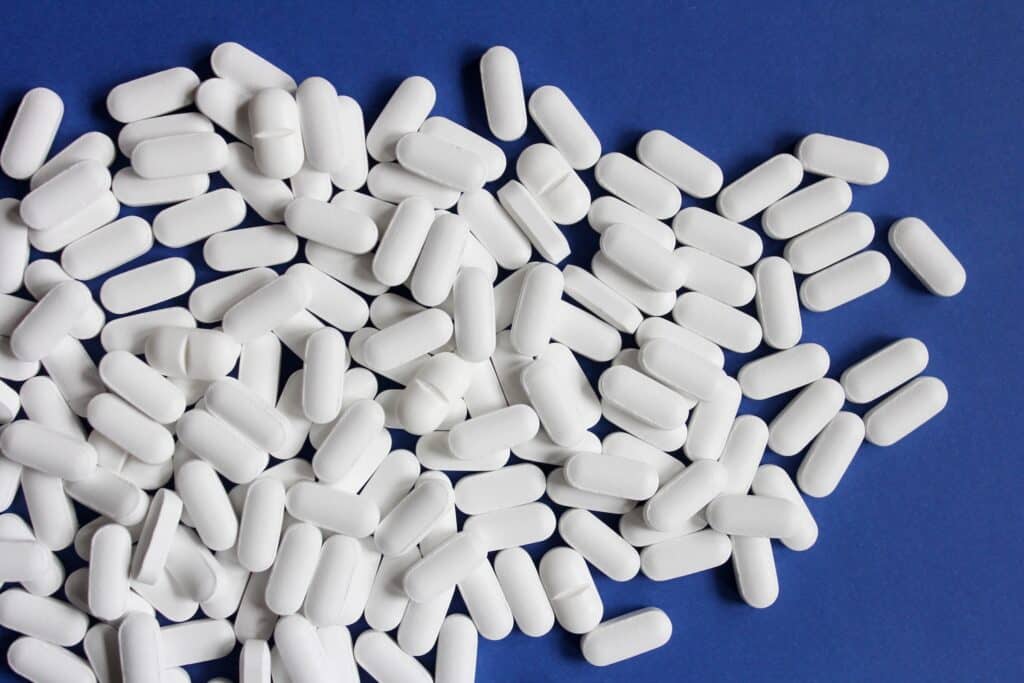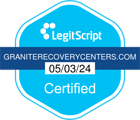 While some people only think of heroin and fentanyl when it comes to opioid use, the truth is that many people get started using prescription pills. Oxycodone is weaker than some of the more dangerous opioids, but that doesn’t make it safe or less habit-forming. Overusing this medication can lead to tolerance, overdose, and other health problems.
While some people only think of heroin and fentanyl when it comes to opioid use, the truth is that many people get started using prescription pills. Oxycodone is weaker than some of the more dangerous opioids, but that doesn’t make it safe or less habit-forming. Overusing this medication can lead to tolerance, overdose, and other health problems.
What is Oxycodone?
While many people have heard of oxycodone, relatively few people know what it really is and how strong it is compared to other opioids. Oxycodone is a semisynthetic opioid that is derived from the poppy plant and is similar to morphine. Unlike heroin, which is explicitly illegal and isn’t regulated, this medication is regulated to ensure that it is made without harmful additives and that the doses are controlled. When used under a doctor’s orders, this medication assists with pain management. The problem is when orders are not followed and when you find yourself taking more than is prescribed to you.
Many people use morphine as the yardstick to compare how potent opioids are. For example, fentanyl is about 100 times as powerful as morphine. This is what makes it so dangerous. Morphine though is about 1.5 times stronger than oxycodone. That being said, it still provides powerful pain relief and can lead to tolerance if overused.
What is Withdrawal?
Many people recognize that withdrawal symptoms are uncomfortable, but what are they and why does this happen? Withdrawal is described as both mental and physical effects that occur once you stop or reduce using a substance. This occurs with nearly every substance from nicotine and alcohol to opioids and cocaine.
There are many factors that determine what symptoms you will encounter and how severe they are. Those who are using harder substances, use for a long time, and use daily will often face more severe withdrawal symptoms than those who used occasionally or moderately. The substance itself also determines the symptoms. Withdrawal symptoms from alcohol are very different than those of opioids.
Withdrawal symptoms are extremely unpleasant and are best dealt with in a medical office. While withdrawal symptoms are often not usually fatal, with the exception of alcohol and benzodiazepines, the potential for relapsing and overdosing during this time can prove to be fatal. Withdrawal is your body trying to catch back up to homeostasis. Your body is always trying to maintain a certain rhythm. It will do this even when you use substances. Certain parts might slow down or speed up in an attempt to maintain an even pattern. Removing the substance can disrupt this new pattern, which often feels uncomfortable. The good news is that withdrawal symptoms are not permanent. You can get through this tough time.
Oxycodone Withdrawal Symptoms
The withdrawal symptoms of oxycodone are basically the same as other opioids. While the withdrawal symptoms may not be as severe as with heroin or fentanyl, the severity largely depends on how much and how often you used. It is important to keep an eye on your health during this time. It’s also recommended to undergo medical detox to have as much support as possible.
The early withdrawal symptoms of oxycodone include:
- Anxiety
- Agitation and anger
- Tearfulness and crying
- Muscle pains
- Runny nose, also known as “the drip”
- Sweating
- Insomnia
- Yawning
Severe Withdrawal Symptoms
Some people only feel minimal withdrawal symptoms. Those who used harder opioids, used for an extended amount of time, or are more sensitive to withdrawal symptoms may also experience these later symptoms:
- Abdominal cramping
- Dilated pupils
- Diarrhea
- Nausea and vomiting
- Goosebumps
It is important to note that opioid withdrawal symptoms are not known for being fatal. You might feel like they are because the withdrawal symptoms are exceedingly uncomfortable. The most dangerous part here is that you will be very tempted to use again. Your body will be seeking out opioids in order to correct the homeostasis that occurred while you were using.
The problem is that your body will quickly lose its tolerance as you withdraw. Not only that, but many people use more than usual because they are feeling so bad. The chances of overdosing are very high at this time. Medical detox is recommended. If you are uncomfortable and doing this at home, then call medical services before attempting to use again.
Oxycodone Overdose Symptoms
While withdrawing from opioids may not be fatal, the unfortunate truth is that an overdose is potentially fatal unless you receive immediate medical care. Opioids like oxycodone depress the respiratory system. This effectively makes it very difficult to breathe when you take too high a dose.
The overdose symptoms from opioids include:
- Pale, clammy skin
- Body is limp
- Pinpoint pupils
- Lips or fingernails look blue or purple
- Severe vomiting or gurgling noise
- Person is unresponsive
- Breathing and heart rate are slow or stop entirely
Another unfortunate truth of an overdose is that you will likely be unconscious before realizing what is going on. That means that you either need to call emergency medical services as soon as you feel something is wrong, or you must rely on others to find you and call EMS for you.
It is advisable that you have naloxone on hand if you are withdrawing or increasing your use. This is a potentially life-saving medication that can halt the effects of opioids on your body. This can give emergency medical services the extra time that they need to save your life.
Medical Detox for Oxycodone
It is important to take advantage of any support and services that you can when trying to recover. Withdrawal symptoms make it hard to recover because your body will be craving opioids more than ever. A medical detox program will be able to give you the extra help that you need to walk away from substances by easing the pain of withdrawal.
A medical detox program ensures that qualified medical staff are watching over you as you detox. A detox is surprisingly fast when you consider how long you have been using. The most intense symptoms tend to occur within the second or third day. Most of the detox will be completed after 10 days, but there might be some lingering minor symptoms for weeks. This is known as post-acute withdrawal syndrome, or PAWS.
Having a doctor watch over you means a safer and more comfortable transition into sobriety. You can be prescribed medications and other treatments as needed to get you through the worst of the withdrawals. Be sure to tell your doctor how you are feeling so that they prescribe the correct medications for your needs.
Medication-Assisted Treatment
Medication-Assisted treatment, or MAT, has proven to be extremely effective with opioid use. You might be surprised to know that this involves using other opioids, but they were designed to help you heal.
The most common forms of MAT include methadone, suboxone, and naltrexone. Each one has pros and cons, so it’s important to speak with your doctor and treatment team to see which is better. For example, naltrexone is a monthly injection, methadone is daily but helps build structure, and suboxone is considered one of the safest and smoothest MAT options. It all depends on your cravings, physiology, and requirements.
These medications ensure that your opioid receptors are engaged, but they do not produce the high feeling that you get from oxycodone and other opioids. Depending on which MAT option you take, the medication might also block other opioids if you attempt to use.
The benefits of MAT include having reduced cravings, reduced withdrawal symptoms, and being able to comfortably rebuild your behaviors so that you can function without substances.
Residential Treatment
Granite Recovery Centers proudly provides residential treatment for those who need this level of care. Residential treatment gives you a place to get away from your stressors so that you can focus on yourself. You’re also to escape the stressors and people that made you want to use so that you rebuild yourself and recover from substances. You will stay at the facility both day and night as you engage in treatment activities. This includes group and individual therapy, seeing the medical staff, and taking your prescribed medications.
Depending on your progress, you will then gradually step down from treatment. This process ensures that you have the support you need as you begin living without substances. The next level down is partial hospitalization. This means that you stay at the treatment facility during the day but go home at night.
You can then step down to intensive outpatient and finally outpatient. Be sure to speak with your clinician or other treatment team members to discuss the level of care that you believe is more appropriate.
Granite Recovery Centers
At GRC, we have been helping the client overcome their opioid use and dependence on other substances for many years. We are here to give you the latest and most cutting-edge treatment currently available. From MAT and medical detox programs to various levels of care with therapy, we can provide the services you need to help you recover.
You can get through this tough time. Call today and start treatment now to begin your life anew.

